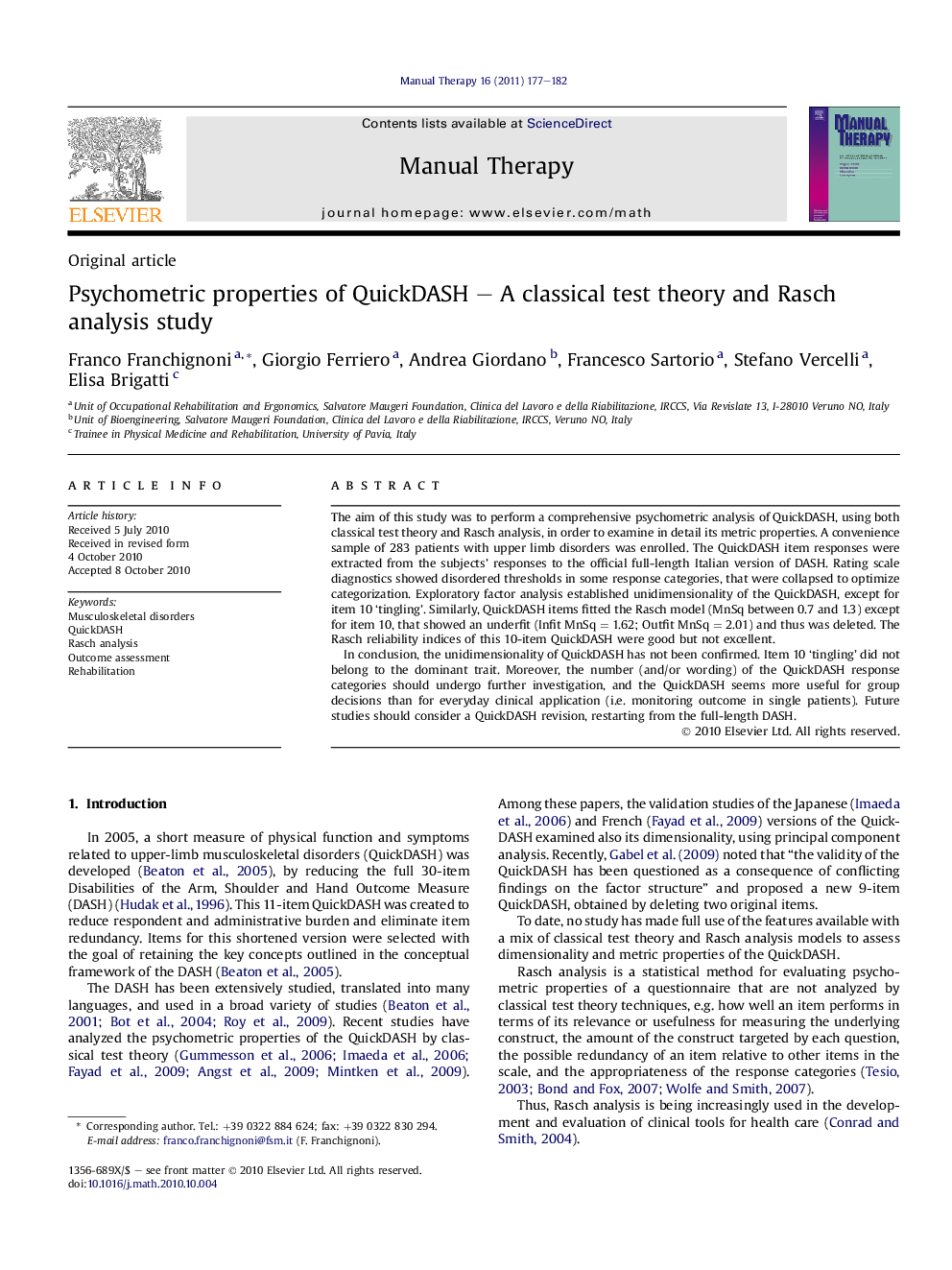| Article ID | Journal | Published Year | Pages | File Type |
|---|---|---|---|---|
| 2625468 | Manual Therapy | 2011 | 6 Pages |
The aim of this study was to perform a comprehensive psychometric analysis of QuickDASH, using both classical test theory and Rasch analysis, in order to examine in detail its metric properties. A convenience sample of 283 patients with upper limb disorders was enrolled. The QuickDASH item responses were extracted from the subjects’ responses to the official full-length Italian version of DASH. Rating scale diagnostics showed disordered thresholds in some response categories, that were collapsed to optimize categorization. Exploratory factor analysis established unidimensionality of the QuickDASH, except for item 10 ‘tingling’. Similarly, QuickDASH items fitted the Rasch model (MnSq between 0.7 and 1.3) except for item 10, that showed an underfit (Infit MnSq = 1.62; Outfit MnSq = 2.01) and thus was deleted. The Rasch reliability indices of this 10-item QuickDASH were good but not excellent.In conclusion, the unidimensionality of QuickDASH has not been confirmed. Item 10 ‘tingling’ did not belong to the dominant trait. Moreover, the number (and/or wording) of the QuickDASH response categories should undergo further investigation, and the QuickDASH seems more useful for group decisions than for everyday clinical application (i.e. monitoring outcome in single patients). Future studies should consider a QuickDASH revision, restarting from the full-length DASH.
